 W
WThe history of rail transport in Albania may have begun as early as 1890. Until the end of World War II, Albania's railways were all narrow gauge lines, built to serve either minesites or military purposes. In 1947 shortly after the establishment of the People's Republic of Albania, the country acquired its first standard gauge public railway. The Communist government, led by Enver Hoxha, extensively promoted Albania's railway network, in particular by effectively prohibiting the use of private transport.
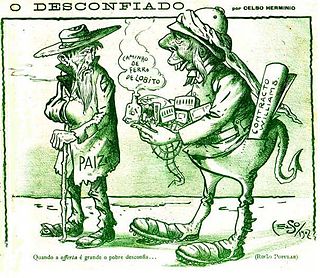 W
WThe history of rail transport in Angola began during the nineteenth century, when Angola was a colony of Portugal. It has involved the construction, operation and destruction of four separate, unconnected, coast-to-inland systems, in two different gauges. Operations on three of those systems have been largely restored; the other system has been closed.
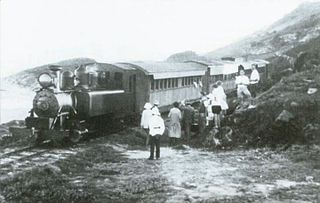 W
WThe Barbados Railway was a 38.6-kilometre (24.0 mi)-long narrow-gauge railway on Barbados with a gauge of initially 1,067 mm and later 762 mm. It had 98 bridges, very tight radii and a steep incline. It was used from 1883 to 1937, after it had gone several times through financial difficulties.
 W
W<3
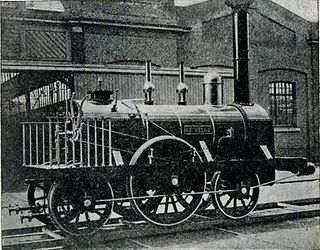 W
WBelgium was heavily involved in the early development of railway transport. Belgium was the second country in Europe, after Great Britain, to open a railway and produce locomotives. The first line, between the cities of Brussels and Mechelen opened in 1835. Belgium was the first state in Europe to create a national railway network and the first to possess a nationalised railway system. The network expanded fast as Belgium industrialised, and by the early 20th century was increasingly under state-control. The nationalised railways, under the umbrella organisation National Railway Company of Belgium (NMBS/SNCB), retained their monopoly until liberalisation in the 2000s.
 W
WThe history of rail transport in Cameroon began at around the turn of the twentieth century.
 W
WThe history of rail transport in Chile has gone through several periods of boom and bust. It began in 1840, with the construction of the first branch in the north. Further construction proceeded apace linking cities from Pisagua all the way to Puerto Montt.
 W
WThe Cyprus Government Railway was a 2 ft 6 in narrow gauge railway network that operated in Cyprus from October 1905 to December 1951. With a total length of 76 miles (122 km), there were 39 stations, stops and halts, the most prominent of which served Famagusta, Prastio Mesaoria, Angastina, Trachoni, Nicosia, Kokkinotrimithia, Morphou, Kalo Chorio and Evrychou. The CGR was closed down due to financial reasons. An extension of the railway which was built to serve the Cyprus Mines Corporation operated until 1974.
 W
WThe history of rail transport in the Czech Republic began in the 1820s. Railways were built primarily for the transport of freight. Periods when they were built and operated by commercial operators have alternated with periods of nationalization, public investment or government support. In 2009 the country had 9,420 km of standard gauge track, 3,153 km of which is electrified.
 W
WThe history of rail transport in Denmark began in 1847 with the opening of a railway line between Copenhagen and Roskilde. The Kiel-Altona line in Holstein was completed three years earlier, but the region was later lost to the German Confederation in the Second War of Schleswig.
 W
WThe history of rail transport in El Salvador began in 1882, with the opening of El Salvador's first line. All rail transport was suspended in 2002. However, limited services were resumed in 2007, between San Salvador, Ciudad Delgado and Apopa.
 W
WThe history of rail transport in Estonia starts in 1870 when a line was opened connecting Paldiski, Tallinn, Tapa and Narva; the line extending all the way to St. Petersburg in Russia.
 W
WThere are currently no functioning railways in Haiti, and there have never been any rail connections with the neighbouring Dominican Republic. However, between 1876 and the 1970s, various tramways and railways ran in the country. A tram network operated in the capital, Port-au-Prince, between 1897 and 1932. Three railway lines, along with some industrial lines, constituted the Haitian national rail network. The first horse drawn street tramway opened in 1876, with rural railways constructed later.
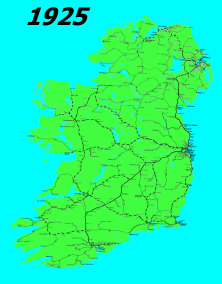 W
Walpha
 W
WRail transport in Israel includes heavy rail as well as light rail. Excluding light rail, the network consists of 1,384 kilometers (860 mi) of track, and is undergoing constant expansion. All of the lines are standard gauge and as of 2016 the heavy rail network is in the initial stages of an electrification programme. A government owned company, Israel Railways, manages the entire heavy rail network. Most of the network is located on the densely populated coastal plain. Some of the rail routes in Israel date back to before the establishment of the state – to the days of the British Mandate for Palestine and earlier. Rail infrastructure was considered less important than road infrastructure during the state's early years, and except for the construction of the coastal railway in the early 1950s, the network saw little investment until the late 1980s. In 1993, a rail connection was opened between the coastal railway from the north and southern lines through Tel Aviv. Previously the only connection between northern railways and southern railways bypassed the Tel Aviv region – Israel's population and commercial center. The linking of the nationwide rail network through the heart of Tel Aviv was a major factor in facilitating further expansion in the overall network during the 1990s and 2000s and as a result of the heavy infrastructure investments passenger traffic rose significantly, from about 2.5 million per year in 1990 to about 67 million in 2018.
 W
WThe Italian railway system is one of the most important parts of the infrastructure of Italy, with a total length of 24,227 km (15,054 mi) as of 2011.
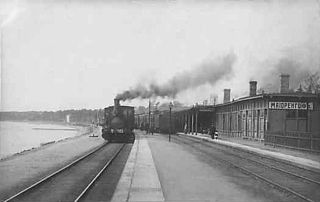 W
WThe history of rail transport in Latvia began with the construction in 1860 of a railway from Pytalovo to Dinaburg, 160 km in length, as part of the Saint Petersburg–Warsaw Railway.
 W
WThe history of rail transport in Lesotho began in 1905, when the landlocked nation of Lesotho was connected with the railway network of South Africa. The two nations have remained connected by a single railway line ever since.
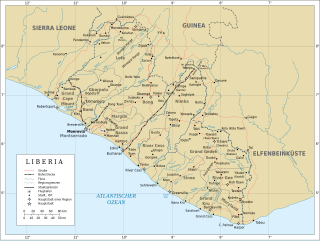 W
WThe history of rail transport in Liberia began shortly after World War II, when the Freeport of Monrovia was completed, with limited rail access. It had been developed by American military forces.
 W
WThe history of rail transport in Luxembourg began in 1846 and continues to the present day.
 W
WThe history of rail transport in Madagascar began at the start of the twentieth century, with the construction of a metre gauge line between Brickaville and Madagascar's capital, Tananarive. That line was the first section of the Tananarive–Côte Est railway (TCE) from Tananarive to Toamasina, the country's chief seaport. It eventually became the nucleus of a network of three railways, the Network North.
 W
WThe history of rail transport in Malawi began shortly after the turn of the twentieth century.
 W
WThe Malta Railway was the only railway line ever on the island of Malta, and it consisted of a single railway line from Valletta to Mdina. It was a single-track line in metre gauge, operating from 1883 to 1931. The railway was known locally in Maltese as il-vapur tal-art.
 W
WThe history of rail transport in Mauritania began in 1940, with the commencement of preparatory work for the construction of the Mauritania Railway, a single track, 704 km (437 mi) standard gauge line connecting a then proposed iron mine in Zouerate with the port of Nouadhibou, via Fderik and Choum. Construction of the line began in 1961 and was completed in 1963.
 W
WThe history of rail transport in Mauritius began in the 1860s. The Mauritian rail network was quickly built and it soon provided service to most of the island. It was a key factor in the social-economic development of Mauritius during its period of operation. However, due to persistent unprofitability from 1948 to 1953, it was closed in 1964. In 2019, the Metro Express light rail system opened, bringing rail passenger traffic back to Mauritius.
 W
WThe history of rail transport in Mozambique began in the latter years of the nineteenth century.
 W
WThe history of rail transport in Namibia began with a small mining rail line at Cape Cross in 1895. The first major railway project was started in 1897 when the German Colonial Authority built the 600 mm gauge Staatsbahn from Swakopmund to Windhoek. By 1902 the line was completed.
 W
WThe history of rail transport in the Netherlands is generally considered to have begun on September 20, 1839, when the first train, drawn by De Arend, successfully made the 16 km trip from Amsterdam to Haarlem. However, the first plan for a railroad in the Netherlands was launched only shortly after the first railroad opened in Britain.
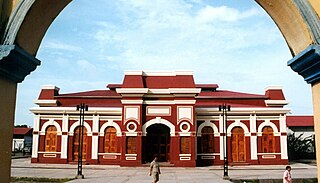 W
WThe history of rail transport in Nicaragua began in 1860s, with the first plans for a railroad in Nicaragua. The first line was opened in 1882. In the past, there were 1,067 mm gauge railroads on the Pacific coast, connecting major cities. A private 1,435 mm gauge line operated on the Atlantic coast.
 W
WThe history of rail transport in Norway had begun by 1805.
 W
WIn 1856 started the studies to make the first railway of the country that would go from Asunción to Paraguarí. With the concession of the company to English hands the railroad extended to Encarnación.
 W
WThe history of rail transport in Portugal dates from 28 October 1856, when Portugal's first railway line was opened between Lisbon and Carregado: the Companhia dos Caminhos de Ferro Portugueses.
 W
WRail transport in Puerto Rico currently consists of a 10.7-mile (17.2 km) passenger metro system in the island's metropolitan area of San Juan. Its history can be traced back to the mid-19th century with the construction of a limited passenger line in Mayagüez. Between the late 19th and early 20th centuries, Puerto Rico's rail transport system expanded significantly, becoming one of the largest rail systems in the Caribbean at the time thanks to an economic boom in agriculture industries, especially the sugar cane industry. The rail system was expanded to include passenger travel with a direct line from the island's northern capital of San Juan to the western and southern cities and towns, greatly improving travel and communication within the island. However, the entire system was soon overshadowed by the arrival of the automobile, and by the 1950s was completely abandoned. Small remnants of this system still exist in some parts of Puerto Rico, some conserved for tourism purposes.
 W
WThe Sierra Leone Government Railway operated in Sierra Leone from 1897 to 1974. It was unusual in that it formed a national railway system constructed solely to a 2 ft 6 in narrow gauge, whereas in other countries gauge of such a narrow width was usually confined to feeder railways.
 W
WThe history of rail transport in Slovakia began in November 1836, at the founding meeting of the participating companies for the construction of a horse railway from Bratislava to Trnava. The first section of that railway was launched on 27 September 1840.
 W
WThe Soviet Union was heavily dependent on rail transport, not least during the Russian Civil War and World War II, but also for industrialization according to the five-year plans.
 W
WThe history of rail transport in Spain begins in the 19th century. In 1848, a railway line between Barcelona and Mataró was inaugurated, although a line in Cuba connecting Havana and Bejucal had already opened in 1837. In 1852 the first narrow gauge line was built, in 1863 a line reached the Portuguese border. By 1864 the Madrid-Irun line had been opened, and the French border reached.
 W
WThe history of Sweden's railways has included both state-owned and private railways.
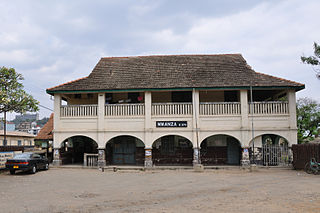 W
WThe history of rail transport in Tanzania began in the late nineteenth century.
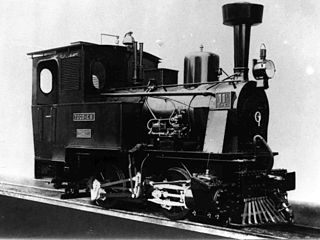 W
WRail transport in Togo began in 1905.
 W
WThe history of rail transport in Turkey began with the start of the placement in 1856 of a 130 kilometres (81 mi) railway line between Izmir and Aydın. The first finished Ottoman railway line was a 66 kilometres (41 mi) line between Köstence and Boğazköy built in 1859-1860.
 W
WWooden railroads, called wagonways, were built in the United States starting from the 1720s. A railroad was reportedly used in the construction of the French fortress at Louisburg, Nova Scotia, in New France in 1720. Between 1762 and 1764, at the close of the French and Indian War (1756–1763), a gravity railroad is built by British military engineers up the steep riverside terrain near the Niagara River waterfall's escarpment at the Niagara Portage in Lewiston, New York.
 W
WThe history of rail transport in Zambia began at the start of the twentieth century.